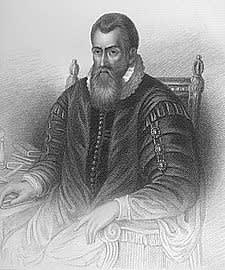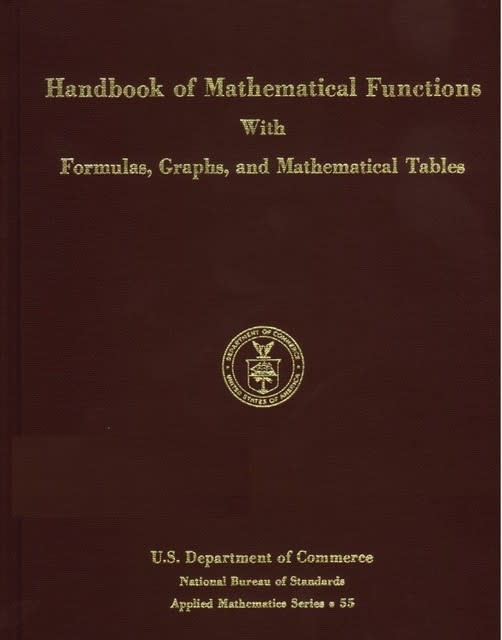脳トレ宇宙論 第13話
天文学と 数値計算、数表、計算機械、人間の作業②
人類が社会生活において経済活動を営むようになると正しiい数量の計算が必要になる。人類の活動が高度化すると、さらに複雑な計算を精度よく行う必要に迫られる。
さて天文学は、遥か紀元前から星々の観測が行われており、極めて古い学問である。その天体の運行に関しては、古代バビロニア、エジプト、ギリシャ、インド、中国、マヤ、ペルシャで考察されていて、その成果の多くは現代天文学の基礎の形成に寄与している。それに関連して天文学の起源は暦を作ることから始まったと考えられている。人類が農耕を行うようになると、農作物の栽培や収穫に最適な時期を知るために1年周期の季節変化を正確に把握する必要が出てきた。一方で人類は太陽や星々の観察によって、季節が変化する1年という周期が、恒星の位置および恒星に対する太陽の位置の移り変わりの周期でもあることを知っていた。このように、いかに正確な暦を作るかを追求することが古代における天文学の主要な役割であった。
・天体座標の発明
天体の位置を座標で表すことに思い至ったのもギリシア人である。紀元前350年ごろ、ギリシアのユードクスは世界地図を作成した。次に、世界で初めて世界地図に相当する星図を作り始めた。ユードクスが優れていたのは基準となる座標を北極星にとり、北極星から全ての方向に広がる放射状の線(赤経)とこれに直交する線(赤緯)を考案したことである。これにより、正確な星図を作成する基礎ができた。
・古代から続いている天文計算
天文学の進歩は、計算に大きく依存している。天体の動きを予測し,航海を導く緯度経度の計算を容易にするさまざまな数表の作成が重要な仕事であった。子午線の決定や外惑星の発見,彗星の回帰時期の予測など,さまざまな天文学上の発見にも天文計算および計算道具、計算機械(現代ではコンピューター)は活躍した。
・三角関数表
三角関数の表は、古代ギリシャとインドで天文学と天体航法への応用のために使用さた。 それは、計算を簡素化し、劇的に高速化するために、電子計算機が安価で豊富になるまで広く使用され続けた。1551年、ドイツの数学者ラウヒェンは惑星の運動を計算する際に必要となる、それまでにない最も正確三角関数表を作成した.さらに、引数を角度に対する表とした(それまでは円弧に対して)。この表は太陽中心説と結び付いて,天文学の計算に飛躍的な発展をもたらした
・ネーピアの対数(1614年)
 ジョン・ネイピア(John Napier, 1550年 - 1617年)スコットランドのバロン。数学者、物理学者、天文学者、占星術師
ジョン・ネイピア(John Napier, 1550年 - 1617年)スコットランドのバロン。数学者、物理学者、天文学者、占星術師
三角関数の計算の中に現れる大きい数の計算は天文学者を苦しめた。大航海時代は計算との闘いでもあった。彼らの計算を助けるために、1594年、ネイピアは新しい計算法を見つけ出す決心をし、その20年後の1614年、ついに「対数」を発明した。
さてネイピアが考えていたかけ算とは三角関数どうしのものである。ネイピアは1°刻みの角度に対する8桁の三角関数に対する8桁の対数を20年かけて作った。驚くべきことにネイピアは指数も小数点の記法もない時代に対数表を作りあげたのである。ところで、ネイピアの対数の底は0.9999999という不思議な数であった。この思議な数は後に一人の天才によって謎が解かれ、そこから微分積分という新しい道が開けていった。
ネイピアの対数表は8桁であるが、その計算精度は7桁までは合っている。しかしこの表は人々に全く理解されなった。指数も小数点もないことに加えて、不思議な底のせいであった。しかしたった一人、天文学者ブリッグスがその本質を見抜き、1615年ネイピアに会い、ブリッグスがネイピアに対数の問題点をたずねると、なんとネイピアは既に新しい対数を考え始めていた。底が10の常用対数である。翌年1616年、現在の常用対数が二人の手によって完成した。ブリッグスはこの常用対数表の作成をネイピアと約束し、7年を費やしそれを果たした。しかしこの時、既にネイピアはこの世にはいなかった。ネイピアとその対数は忘れ去られ、ブリッグスの対数表が世界を席巻することになった。数学者ラプラスは「対数は天文学者の寿命を倍に延ばした」と言ったとのことである。
(WEB参照:人と星とともにある数学 第5回:ジョン・ネイピア対数誕生物語)
・計算機械の発展
天文学の進歩は、計算に大きく依存している。1614年のネーピアの対数の発明以来、天文学者は長い計算を行うのに対数表を頼りにしてきた。さらに複雑な計算を行う計算機械の必要性が高まる。ヨーロッパでは16世紀頃から精密機械技術の発達により計算機と呼べるものが作られるようになった。17世紀の半ばフランスのパスカルが税務官の父の計算を助けるために歯車式の計算機を作成した。ドイツではライプニッツはそれを改良してさらに高度な計算機を作成した。機械式計算機が市場に販売されるなようになったのは19世紀末になってからである。UK の数学者バベッジ(1791年ー1871年)は人間の骨の折れる作業から解放すると言うライプニッツの思想を受け継ぎ、バベッジの解析機関を考えた。
・数表の復権
天文学の計算において機械は対数表より早いことを証明したが2つの点が広範囲の使用を妨げた。機械は高価だった。また使用するには別の数表―対数でなく自然数の三角関数表―が要求された。つまり、天文学の研究における計算機械の使用には対数表ではなく自然数の三角関数表が必要であった。しかしこのような数表はまだ出来ていなかった。皮肉なことに自然数表は対数がよく使われるようになって捨てられたものだった。300年後に自然数表は再出版され精度も上がって、天文学研究に計算機械が使用できるようになった。
1896年W.ヨルダンは、300年前の「オーパス・バラチナム」から正弦・余弦表を再出版した。L.J.コムリー は
この数表は「機械の導入が自然数表の必要を復活させた最初の証拠」になったと述べている。またクレーレの数表は、多数回の掛け算が必要な研究をしている科学者に最もよく使われた。
・A Short History of Mathematical Function Tables

In the 18th and 19th centuries, scientists discovered that the elementary functions—powers, roots, trigonometric functions and their inverses—had their limitations. They found that solutions for some important physical problems—like the orbital motion of planets, the oscillatory motion of suspended chains and the calculation of the gravitational potential of nearly spherical bodies—could not always be described in a closed form using only elementary functions. Even in the realm of pure mathematics, some quantities—such as the circumference of an ellipse—were also impossible to discuss in such terms. Functions describing solutions to these problems were often expressed as infinite series, as integrals or as solutions to differential equations.
On further investigation, scientists noted that a relatively small number of these special functions turned up over and over again in different contexts. What's more, they noted that many other problems could be solved in the form of a comparatively simple combination of these newer functions with the elementary functions known to the ancients. Functions that cropped up most frequently in scientific calculations were given names and notations that have come into common usage: Bessel functions, Struve functions, Mathieu functions, the spherical harmonics, the Gamma function, the Beta function, Jacobi functions and most of the others .
In the second half of the 19th century mathematicians also started to investigate these special functions from a purely theoretical perspective. Alternative representations—as
differential equations, series, integrals, continued fractions or other forms—were found for many. Important publications on the topic at the turn of the century include the four- volume masterpiece on the elliptic functions by J. Tannery and J. Molk (published 1893–1902), containing hundreds of pages of collected formulas; I. Todhunter's treatise on Laplace, Lamé and Bessel functions (1875); E. Heine's treatise on spherical harmonics (1881); and A. Wangerin's work on the same topic (1904).
Large tables with numerical values for the special functions also began to appear, along with three-dimensional "graphs" made of wood or plaster—masterpieces of precision sculpting—showing the behavior of functions such as P and the Jacobi functions. Many of these models are still on display in math departments throughout the world and the graphics on this website can be thought of as their modern, computer-drawn counterparts.
Charles Babbage, who designed but was unable to build the "difference engine," planned a printing device allowing the machine to generate large tables automatically. A Swedish publisher named Georg Scheutz and his son Edvard later built a difference engine that could set type. In 1857, the Scheutzes produced a mechanically generated table of common logarithms to five decimal places for the integers from 1 to 10,000; each value took about thirty seconds to calculate. Funktionentafeln mit Formeln und Kurven, the first modern handbook of special functions—that is, one containing graphs, formulas and numerical tables—was published in 1909 by Eugene Jahnke and Fritz Emde. Parallel to the handbooks dealing with series expansions, differential equations, functional identities and so forth of special functions, many integral tables were developed in the 20th entury.
Application of the electronic computer resulted in many massive volumes containing hundreds of pages of tables for Bessel functions, elliptic integrals, Legendre functions and so on.
An important handbook containing graphs, formulas, and compute-generated numerical data was assembled by Milton Abramowitz and Irene Stegun. This work was published in 1964 by the National Bureau of Standards as the Handbook of Mathematical Functions with Formulas, Graphs and Mathematical Tables. Individual chapters were compiled by various authors, leading to a certain unevenness in the quality of the material and its presentation. Nevertheless, the Handbook of Mathematical Functions remains a standard reference and is still in widespread use.
Ironically, the computer that led to the creation of such mammoth numeric tables is now eliminating the need for them. The ready availability of computer processing time and technical software now allows technical users to calculate the values of any needed function without recourse to reference works. Mathematica can calculate every special function to any desired precision for any real or complex values of the arguments and parameters. Additionally, Mathematica can symbolically and numerically calculate values for integrals or other operations and transformations involving these functions, providing far more information than any single handbook could possibly tabulate.
・ベッセル関数
スイスの数学者・物理学者ダニエル・ベルヌーイ(Daniel Bernoulli, 1700年 - 1782年) によって定義され、ドイツの数学者・天文学者のフリードリッヒ・ベッセルによって一般化された関数。
物理で扱うベッセル関数は、電磁放射など、特定の振動数で同心円状または同心球状に広がる波動の方程式であるヘルムホルツ方程式の軸対称または点対称の系を取り扱うときに、半径方向の波の振動の解として現れることに由来する。
実際にベッセルが、惑星運動論において、太陽の周りを回る惑星の軌道を2体問題として扱うケプラー方程式を解くために、このベッセル関数を用いた。
(Wikipedia 参照)





















※コメント投稿者のブログIDはブログ作成者のみに通知されます